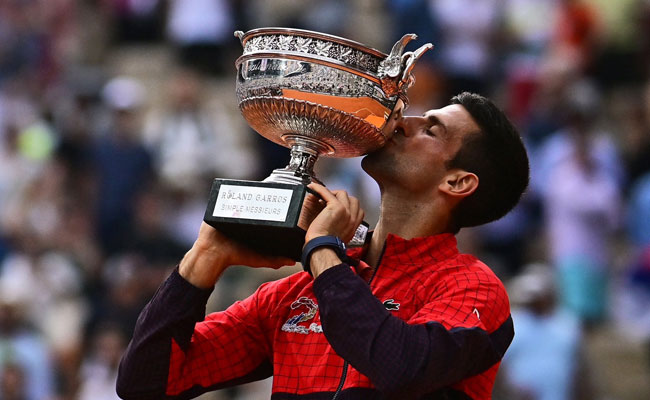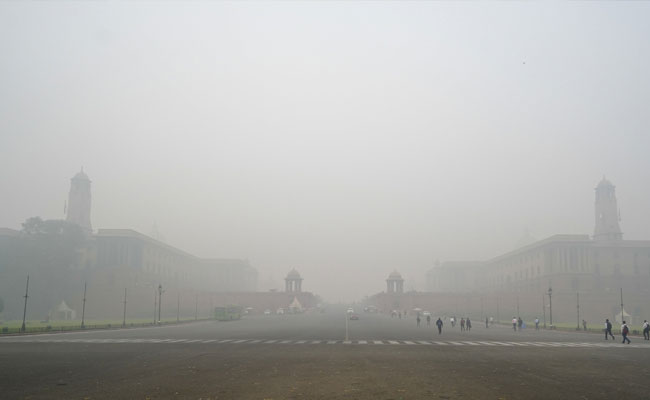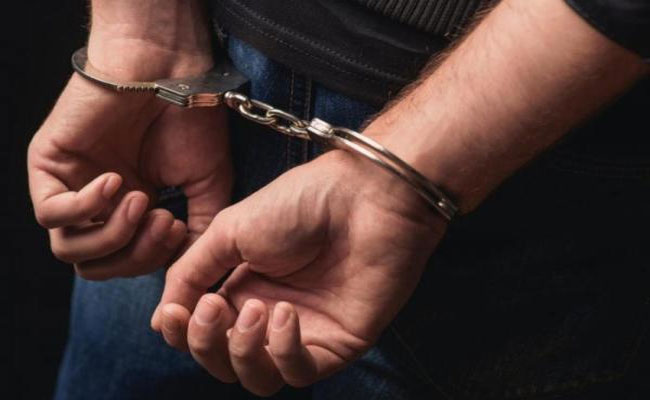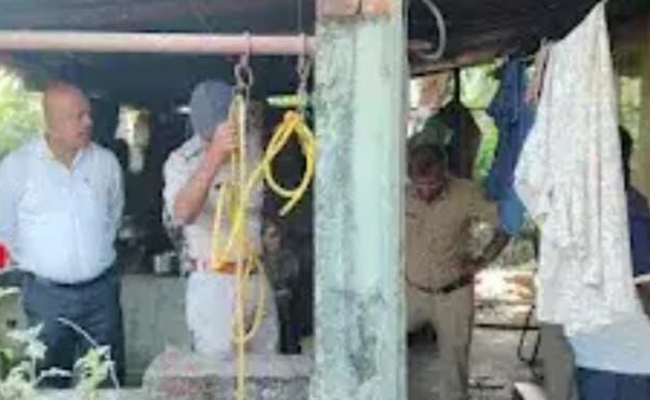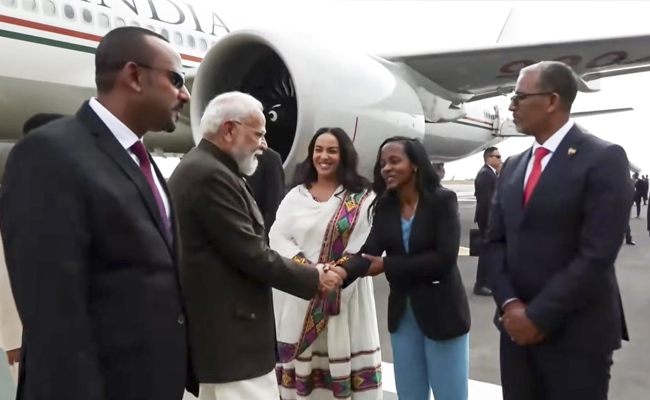New York(AP/PTI): Novak Djokovic emerged from an exhilarating and exhausting U.S. Open final with a 24th Grand Slam title, using every ounce of his energy and some serve-and-volley guile to get past Daniil Medvedev 6-3, 7-6 (5), 6-3 in a match that was more closely contested than the straight-set score indicated.
Djokovic, a 36-year-old from Serbia, moved one major singles title in front of Serena Williams to become the first player to win 24 in the Open era, which began in 1968. Margaret Court also collected a total of 24, but 13 of those came before professionals were admitted to the Slam events.
"It obviously means the world to me," said Djokovic, who will return to No. 1 in the rankings on Monday.
There were moments, particularly in the 1-hour, 44-minute second set that was as much about tenacity as talent, when Djokovic appeared to be faltering. After some of the most grueling points and there were many he would lean over with hands on knees or use his racket for support or pause to stretch his legs. After one, he dropped to his back on the court and stayed down for a bit as the crowd roared.
He allowed Medvedev to come within a single point of taking that set while returning at 6-5. Djokovic rushed the net behind his serve, and while Medvedev had an opening for a backhand passing shot he did not come through.
That was a key adjustment: When Djokovic was looking more bedraggled, he turned to serve-and-volleying, not his usual sort of tactic, to great success. He won 20 of 22 points he played that way, and 37 of 44 overall on the points when he went to the net.
This triumph against Medvedev, the opponent who beat him in the 2021 final at Flushing Meadows to stop a bid for the first men's calendar-year Grand Slam in more than a half-century, made Djokovic the oldest male champion at the U.S. Open in the Open era.
"First of all, Novak, I want to ask: What are you still doing here? Come on," Medvedev joked during the trophy presentation.
Djokovic's fourth championship in New York, where he was unable to compete a year ago because he isn't vaccinated against COVID-19, goes alongside his 10 trophies from the Australian Open, seven from Wimbledon and three from the French Open, extending his lead on the men's Slam list.
Rafael Nadal, who has been sidelined since January with a hip problem that required surgery, is next with 22; Roger Federer, who announced his retirement a year ago, finished with 20.
When it was over, Medvedev tapped Djokovic on the chest as they chatted at the net. Djokovic flung his racket away, put his arms up and then knelt on the court, with his head bowed. And then the celebration was on. First he found his daughter for a hug. His son and wife came next, along with his team.
Soon, Djokovic was donning a shirt with "24" and "Mamba Forever" written on it as a tribute to the late NBA star Kobe Bryant, who wore that jersey number. And on top of that went a white jacket with the same significant number stamped on the chest.
As good as ever, Djokovic went 27-1 in the sport's most prestigious events this season: The lone blemish was a loss to Carlos Alcaraz in the final at Wimbledon in July. Djokovic will rise to No. 1 in the rankings on Monday, overtaking Alcaraz, who was the defending champion at Flushing Meadows but was eliminated by No. 3 Medvedev.
At the start Sunday, with the Arthur Ashe Stadium retractable roof shut because of rain in the forecast, Djokovic was comfortable as can be. No sign of the occasion weighing on him, no trace of the tension he acknowledged briefly arose late in his semifinal against unseeded American Ben Shelton.
His exemplary movement good as ever, every stroke just so, Djokovic came out as his best self. He grabbed 12 of the first 16 points three via aces perfectly placed, and with pace, and four via exchanges that lasted 10 strokes or more along the way to leads of 3-0 and 4-1.
Medvedev, in contrast, seemed tight, jittery, the looping swings of his white racket breaking down repeatedly, whether on a trio of double-faults in the opening set or during the lengthier points, other than on one 37-shot back-and-forth that ended when Djokovic blinked, stumbling as he flubbed a backhand.
Beyond that, though, Djokovic was as reliable as a metronome, anticipating nearly everything headed his way and scurrying this way and that to retrieve and respond, as is his wont.
And the fans sure were appropriately appreciative, which has not always been the case over Djokovic's career. On this afternoon-into-evening, support came from thousands, not only the folks invoking his two-syllable nickname while chanting, "Let's go, No-le, let's go!" or those in his guest box, including Oscar winner Matthew McConaughey, one of many A-listers on hand.
When he got to set point in the first on a miscue by Medvedev, Djokovic showed his first real bit of emotion, raising a fist and turning to the corner where his entourage had jumped to their feet. When another Medvedev miss ended the set, Djokovic simply exhaled and strode to the sideline.
He relies on analytics and what a foe's tendencies are. He leans on instinct and a masterful ability to read opposing serves and groundstrokes. On Sunday, his blue shoes carried him right where he needed to be, more often than not, and his flexibility turning, bending, contorting, stretching, sliding, defending with his back to the net, even allowed him to keep the ball in play, when required, and create flip-the-switch offense, too, if desired.
Medvedev plays a similar type of tennis, and their mirror images would elongate points for 25 shots, 35 shots, more.
Was Djokovic perfect? No. But, wow, he came close in sections, and he was absolutely good enough throughout to win, as he so often is.
Let the Truth be known. If you read VB and like VB, please be a VB Supporter and Help us deliver the Truth to one and all.
Chandigarh (PTI): Chief Minister Bhagwant Mann on Monday slammed the BJP saying its leaders used to "defame" Punjab farmers over stubble burning and blame them for Delhi's poor air quality and questioned why is there pollution crisis in national capital despite no farm fires now.
Mann said that as soon as paddy harvest takes place, BJP leaders blame Punjab and its farmers for Delhi's poor air quality.
He said they used to claim that stubble burning by Punjab farmers causes Delhi's pollution.
Mann said at present, the Air Quality Index in major Punjab cities is between 70 and 130.
"At present, Delhi's AQI is between 450 and 500 and no smoke is coming from Punjab. But the situation in Delhi is worse. At least now they should agree that there is no role of Punjab for Delhi's poor air quality," Mann said in a video message.
Mann's remarks came on a day Delhi Environment Minister Manjinder Singh Sirsa apologised for the air pollution crisis in the national capital and acknowledged its impact on children's health.
Sirsa, however, asserted that it was the result of the policies pursued by the previous Aam Aadmi Party (AAP) government in Delhi.
ALSO READ: Goa nightclub fire: Luthra brothers deported from Thailand, taken into police custody
Last month, the BJP had trashed the Punjab CM's previous claim that stubble burning in the state has no role in the high levels of air pollution in Delhi as "ridiculous".
Dismissing Mann's claim, Delhi BJP president Virendra Sachdeva had last month said it is certain that stubble burning is a "major" factor (for the air pollution in Delhi).
Meanwhile, Mann in his video message said, due to severe floods which Punjab witnessed this year, paddy harvesting got delayed, "despite this, many Delhi ministers had already started blaming Punjab".
"I want to praise Punjab farmers, NGOs and efforts of the Punjab government have also paid off in controlling stubble burning this time. The cases of stubble burning in Punjab have reduced by 70-80 per cent and this has been acknowledged by the Central Government and the Union Agriculture Minister," Mann said.
The CM further said that after paddy harvest even the wheat crop has been sown and now, there is no incident of stubble burning.
He said BJP leaders used to claim that Punjab's smoke from stubble travels to Delhi.
"Now, there is no stubble burning, but Delhi is facing very poor air quality. This proves that earlier too Punjab's smoke had no role for Delhi's poor air quality. Only accusations were made by the BJP to defame Punjab. At least now the Centre should praise the farmers of Punjab," he said.
"Meanwhile, Delhi's AQI is between 450 and 500, flights are being cancelled, and breathing has become difficult," said Mann.
He asked both the BJP government in Delhi and the BJP led Centre to address Delhi's air pollution, saying citizens cannot even venture out for a walk due to air pollution.
He also asked the BJP that Punjab should not be dragged into this political battle, instead, Punjab's farmers should be appreciated, and the Delhi and Central governments should focus on addressing Delhi's air pollution.
Mann further said that farmers of Punjab are 'anndatas' (food providers) and they meet the country's food needs, they should not be defamed.

